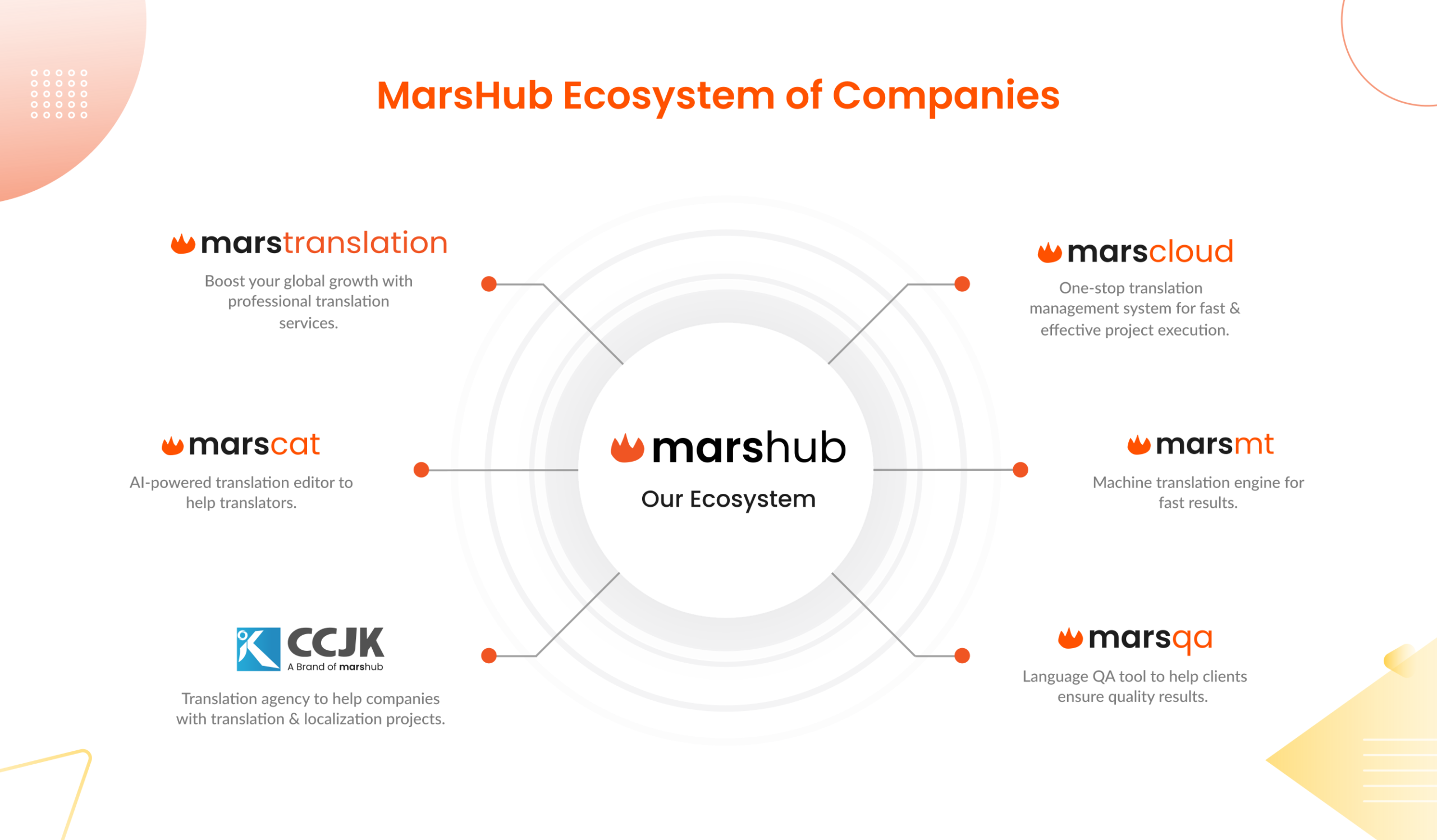Adapting all aspects of your software to local markets and creating a personalized user experience may seem overwhelming to many SaaS businesses. But it is not a matter of choice anymore, software localization has become more critical with the rapid globalization. Businesses must learn and practice the art of localization to make their way into the global markets and target wider audiences.
Making your software ready for international markets comes with many challenges that you must evaluate before developing a strategy. There is not just one way of looking at software localization, and it more depends on the scope of your software, the audience you’re catering to, and the kind of results you want to achieve.
By understanding the correct way to approach your localization project considering all the risks and challenges, and using the best localization practices, you can actually prevent making mistakes and maximize the chances of success.
How Software Localization Works for Your Global Product?
The world is now more connected than ever before. The trade barriers have been eliminated, and businesses are liberated to expand their roots globally. Not just that, digitization has made it even simpler and cost-effective to target international audiences. However, it all comes with a price of intense competition. Fewer trade restrictions and free markets have made it more convenient for businesses to take over the international market through innovation and quality. Brands can’t really monopolize the markets. There is only one secret left to success: do it better than competitors.
That’s why localization is inevitable for businesses that want to capture global markets. Your target customers already have a lot of options out there, you must enhance your brand experience for foreign markets to be more visible and desirable.
Moreover, localization reduces the language barrier, cultural diversification, and communication issues between the audience and the brand.
How to Develop Your Software Localization Action Plan
Before stepping into the waters of localization, you need to get a real understanding of how things actually work. From defining your project goals, budget, and timelines to evaluating the risks and challenges, you must make yourself prepared for localization through strategic planning. Here are a few steps you must take to effectively go about your localization planning.
Defining The Scope of Software Product
You must have a clear idea of what you want to achieve from the beginning. You have to clearly define the scope of software and localization objectives to create a strategy that will work towards your specific goals. At this stage, you also need to assess your SaaS product features, benefits, and other user-facing elements. The more you understand your software, the more you will be able to figure out what needs to be modified and how to adapt it in a way that may resonate with maximum people.
Understanding Market Demographics
Tapping into a new market is not very simple; you need to conduct comprehensive research looking for reasons why a market has potential for your software. You must thoroughly analyze the customer’s preferences, perceptions, fascinations, and other cultural nuances to fully grasp a market’s demographics. Researching a market also allows you to evaluate the risks, competition, and other barriers to entering a specific market. For market research, you can conduct online surveys and interview your customers in person to get their feedback on how they think about your software, and whether they would consider using it.
Develop A Budget Plan
Once you have defined your goals and researched the markets, it’s time to make a localization budget plan. From translating your software content to quality assurance and advanced localization tools, you must know how much it will cost you to localize your software. There are several ways you can do your software localization based on your project budget. For instance, if assembling an in-house team and buying the latest tools is going out of your budget, you can always go for a professional language service provider to handle your localization project. Especially, if it is a small-scope project, you don’t have to establish a separate localization department.
So, you must be very realistic when it comes to financial planning, avoid cutting corners, and get things done within your financial constraints.
Assemble A Localization Team
If you choose to manage your localization project in-house, you must build an experienced and skilled localization team. It may require a comprehensive recruitment process, which involves resume evaluation, interviewing, sample testing, salary negotiations, etc. The hiring process may take some time, but you will end up recruiting talented individuals with industrial expertise.
When you hire experienced professionals, you don’t need to spend time and resources training them to use advanced tools and methods.
Establish Your KPIs
At this point, you must know your key performance indicators to judge the overall credibility and success of your localization efforts. You can define your relevant KPIs to watch the progress of your localization project. For software localization, your KPIs can be software downloads, revenue growth, social media engagement, and user bounce rate. It will not just help you to measure your localization results but also figure out the problematic areas in your strategy, so you can work on them over time.
Evaluating the Risks and Challenges
Depending on the target you are tabbing into, you are going to face certain risks and adversaries. To make your global software launch smooth and effortless, you need to identify these risks and technical complexities of software localization. So, when any issue occurs during your software localization, you already know how to mitigate it. Through proper risk assessment, you can address all potential obstacles that come about while doing localization.
Prepare Your Localization Toolkit
Now, that you have fully understood your project requirements and have an actionable plan at hand, you need to prepare a localization toolkit. From resource management to automated translation operations, the latest tools are available to make your localization journey seamless and smooth. You can buy a professional TMS to manage all your localization tasks from one place. Similarly, you can also get your hands on the latest CAT tools, translation engines, and other integration tools.
Always Have a Plan B
What would you do if your localization strategy failed to get you the expected results? Would you keep pushing the current strategy until things get better? Would you start to blame your teams for cutting corners? Or, would you assume maybe the localization is not your cup of tea? All of these are quite regressive ways of looking at failed localization projects.
Maybe you just need a plan B. If one thing is not working for you, there has to be a better way of doing things. Evaluate your KPIs to analyze where you might have gone wrong, or you may have misinterpreted the culture all along. So, you must be solution-focused and have another plan ready to be implemented with all the learning you have gathered from plan A.
Software Localization Best Practices
Following the best localization practices and guidelines can help you invest your precious time, money, and effort in the right stuff.
Start With Internationalization
In your software localization journey, internationalization (i18n) is the first and most crucial step. It is a process of making your software product ready for localization. And, in case you missed that step, you will be wasting your time in complex localization processes. I18n aims to make your localization seamless, less time-consuming, and effortless for developers and translators. I18n prevents you from hard coding your user-facing elements inside the software code. You keep these elements in external files and import them whenever software code is executed. It makes localization simple, and less complicated for the localization teams.
Translate The Textual Content
Here comes the most critical part of software localization, language translation. Your target audiences’ overall understanding of the software depends on how well you have translated it into their native languages. Software translations are more complicated and technical than other sorts of conventional translations. So, you must find translators who have sufficient industrial experience with linguistic expertise. Make sure your newly translated content is well-adjusted to the design and layouts of the software. Some languages use more space than others, so your software design has to be flexible. You can also partner with professional LSPs to get professional video translation services or document translation services for your software.
Create Multilingual Terminologies and Style Guide
It’s important to provide your professional translators with the right material, references, and tools to effectively manage their translation work. You must give your translators a clear sense of your brand’s unique voice, tone, and style. It will allow them to generate consistent translations for all regions. To achieve that you create translation glossaries and style guides that will provide your translators sufficient materials to fully grasp your software translation needs.
Subscribe To a Professional TMS Tool
To keep your translation operations seamless and streamlined, you must get your hands on a professional cloud-based translation management system. There are several translation tools you can find in the market that provide advanced features to handle your excessive translation loads effectively. Not just that, using these tools you can effectively manage your internal and external localization teams. You can customize the features and specifications of your TMS based on your unique translation and localization requirements.
Localizing Marketing Campaigns
When it comes to software localization, you must localize all aspects of your SaaS product. From its appearance, and languages to the marketing campaigns to generate brand awareness in new markets, everything has to be localized. Marketing campaign localization will maximize the reach of your software and enhance its organic visibility. It will decrease the barrier to entering a new market and also help you create a solid brand identity.
Establish End-to-End Quality Assurance
When it’s about your global brand image, you better not compromise on the quality of your localization efforts. Whether it is the fluency of translation or the flexibility of software design, all aspects of your software must be tested through proper quality assurance processes. For this, you can use automated software, or also go for manual proofreading and testing. Before launching your software in a foreign language, you must conduct multiple tests to evaluate its design responsiveness, functionalities, and other user-facing elements.
You can also do patch testing of software on a sample of potential customers, and get their feedback on what can be improved. You can also use performance analytics software to watch the real-time performance of your software in a foreign market. It will allow you to make a timely change to your software if something doesn’t seem to work.
Wrapping Up!
To manage your software localization project effectively, you must have the right knowledge, tools, and strategies in place. If you are still in the development phase of software, you must start thinking about localization right away. The earlier you adapt your software for localization and internationalize it, it will help you later by making your localization processes effortless and agile. Following the best localization practices, you can significantly reduce the chances of errors, and get higher ROI.
Register yourself with MarsCloud and get a 14-day Free trial.



